Some time around 2011, I wrote a Pycairo script to generate a PDF that included several fills of custom vector patterns. Today I re-ran it (Python 3.5.2, Pycairo 1.10.0) and was surprised to see that all these patterns were rendered as low-resolution rasterized bitmaps. I reduced my script to this minimal example:
#!/usr/bin/python3
import cairo
def main():
surface = cairo.PDFSurface("test.pdf", 100, 100)
ctx = cairo.Context(surface)
pattern = make_pattern()
ctx.rectangle(10, 10, 80, 80)
ctx.set_source(pattern)
ctx.fill()
surface.finish()
def make_pattern():
pattern_surface = cairo.PDFSurface(None, 32, 8)
ctx = cairo.Context(pattern_surface)
ctx.set_line_width(.5)
ctx.set_source_rgb(0,0,0)
ctx.move_to(5, 6)
ctx.line_to(27, 2)
ctx.stroke()
pattern = cairo.SurfacePattern(pattern_surface)
pattern.set_extend(cairo.EXTEND_REPEAT)
return pattern
if __name__ == "__main__":
main()
The resulting PDF, heavily zoomed, renders the pattern like this:
Eyeballing the text of the PDF file confirms that this is a bitmap. Using an SVGSurface produces similar results. Is there a way to revert to the old behaviour whereby PDF pattern fills were rendered as vector fills in the final PDF rather than being rasterized like this? The only reference I've found online to the problem is this unanswered question on the cairo mailing list from January 2012.

